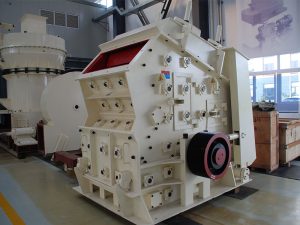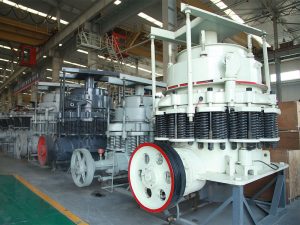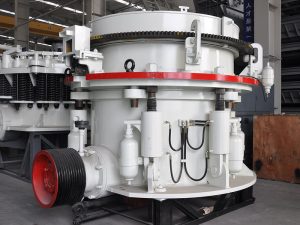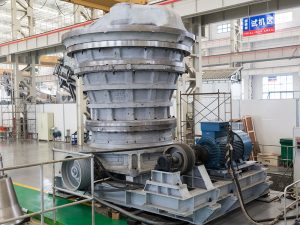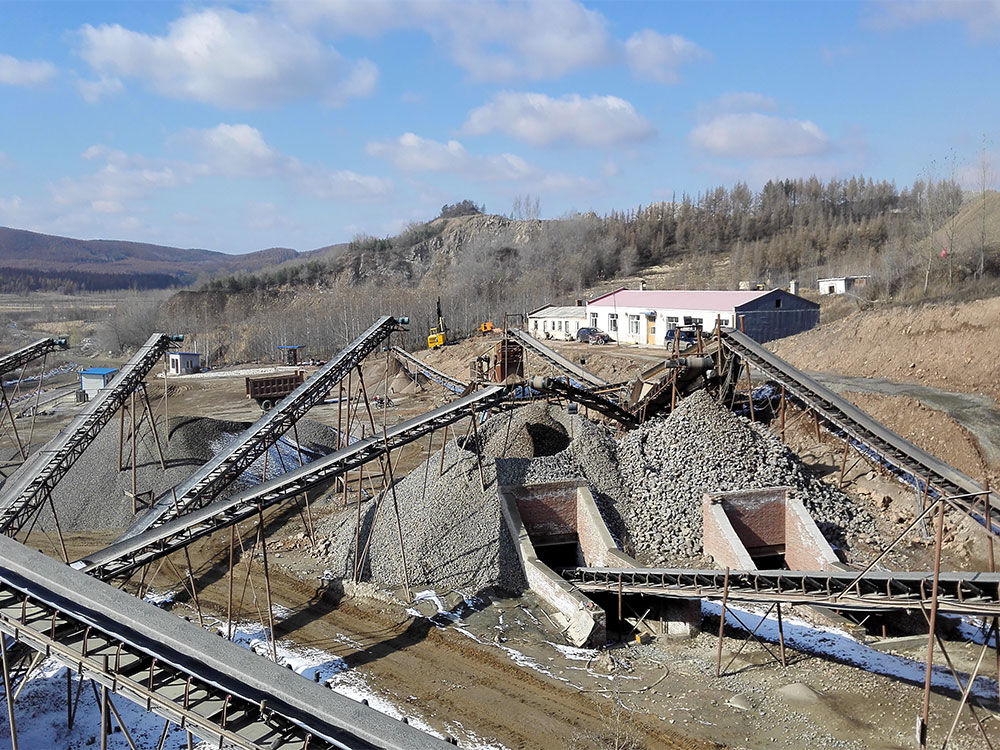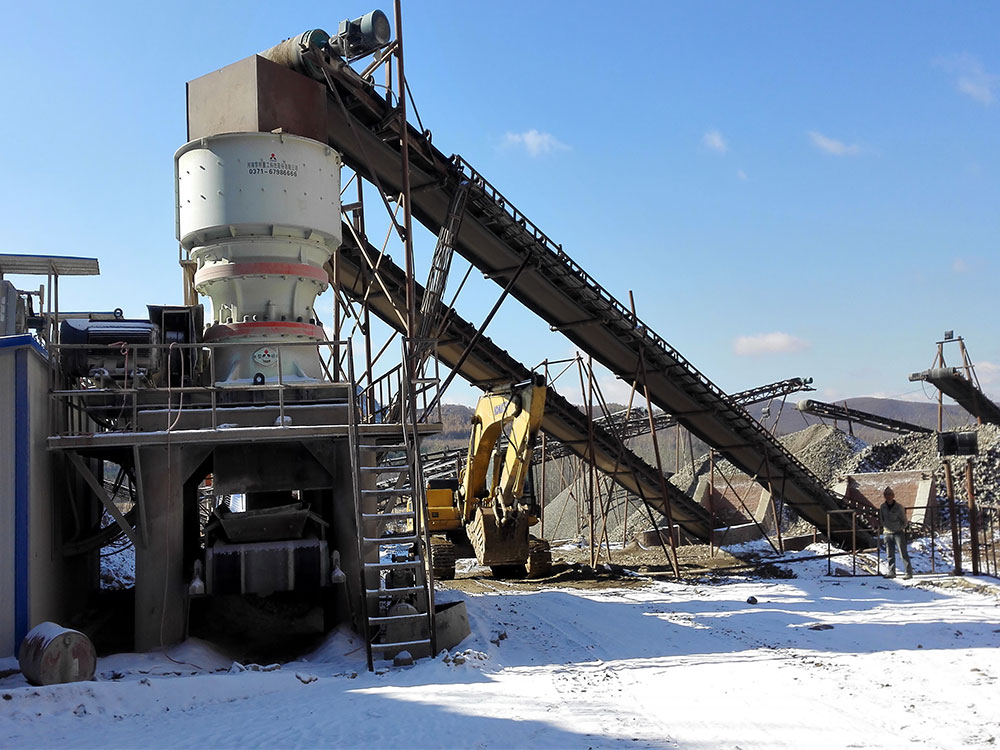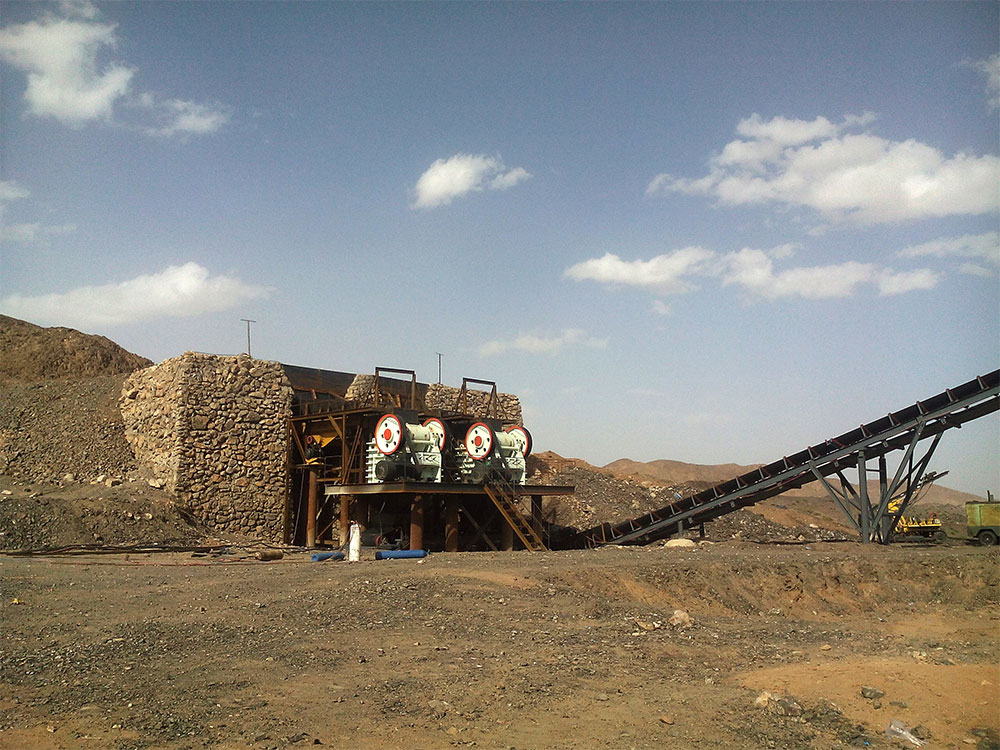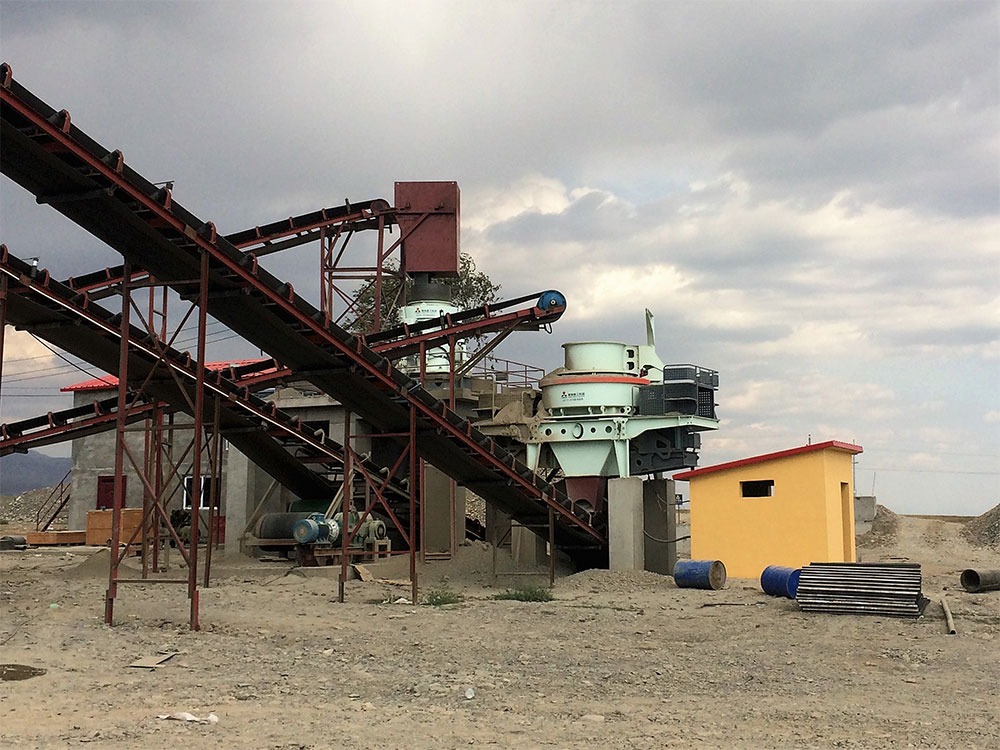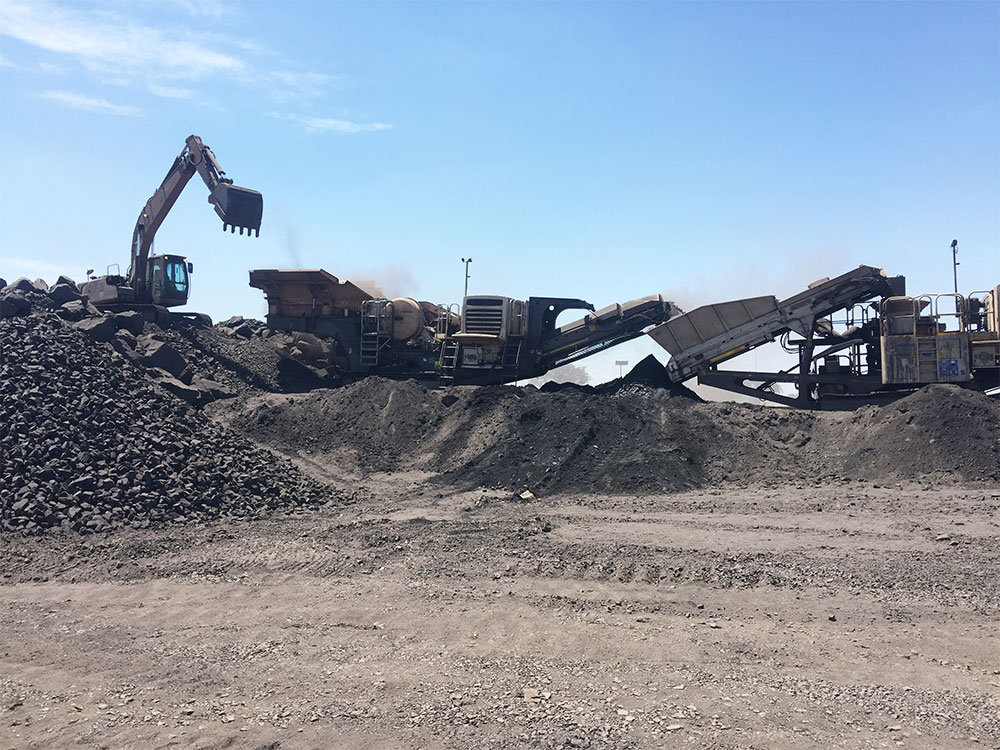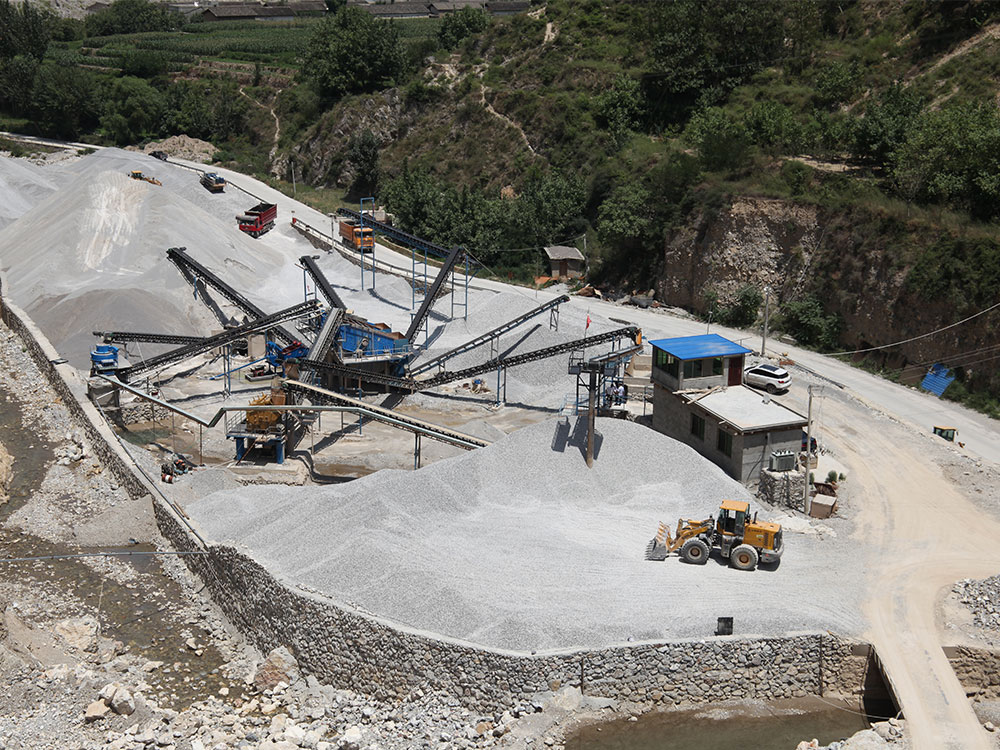The process flow of the hard rock crushing production line is especially for high-hardness rocks such as granite and basalt with Mohs hardness of 7 and above. Through multi-stage crushing, fine screening and closed-loop circulation, it ensures efficient and accurate processing. The following is a detailed analysis of its core steps:
Preliminary crushing stage:
Large hard rock blocks (size not exceeding 1200mm) are evenly conveyed to the jaw crusher through a vibrating feeder for the first crushing, converting them into coarse crushed materials with a size not exceeding 200mm. At this stage, it is crucial to use heavy-duty jaw crushers (such as the CJ series), and high-manganese steel liners are used to enhance wear resistance.
Medium and fine crushing stage:
The coarsely crushed materials are conveyed to the cone crusher via a conveyor belt for further crushing. The medium crushing stage uses a standard cavity cone crusher (such as the HST series) to produce materials of 30 to 50mm; the fine crushing stage uses a short-head cone crusher (such as the HPT series) to obtain fine crushed materials of 10 to 30mm. Through the lamination crushing technology, the proportion of needle-like materials is effectively controlled to ensure that it does not exceed 15%.
Screening and circulation treatment:
The materials after medium and fine crushing need to be graded by vibrating screen. Materials that meet the feed particle size requirements of the sand making machine (≤50mm) will be sent to the sand making stage; materials that exceed the particle size requirements will be returned to the cone crusher for re-crushing to form a closed-loop circulation. It is recommended to use heavy-duty circular vibrating screens (such as 3YK series) for screening equipment, and the screen is made of polyurethane-wrapped manganese steel to prevent clogging and improve wear resistance.
Sand making and shaping:
Qualified materials enter the impact sand making machine (VSI or HVI series) for fine crushing and shaping, and finally produce 0 to 5mm machine-made sand. To ensure the quality of the finished product, the sand making machine needs to be equipped with a highly wear-resistant impeller (such as tungsten-cobalt alloy coating) to ensure that the mud content of the finished sand does not exceed 3% and the particle shape is round.
Secondary screening and environmental protection treatment:
The materials after sand making need to be screened twice. Materials that meet the particle size requirements of the finished product will be sent to the stockpile; materials that exceed the particle size requirements will be returned to the sand making machine for further processing. In addition, sand washing can be added as needed to reduce the mud content of the finished sand. The wastewater generated during the sand washing process can be recycled through flocculation sedimentation and filter press treatment, and the mud cake produced by sedimentation can be recycled.
Special process and case reference:
Due to the characteristics of hard rock, the production line prefers cone crushers rather than impact crushers to reduce wear; at the same time, iron removers are configured to remove impurities in the ore.
By using impact crushers as the final stage equipment, the particle shape of the finished sand can be further optimized, so that the proportion of needle-like materials is controlled within 10%.
In terms of energy-saving design, the closed-loop circulation effectively reduces over-crushing, and the iron protection function of the hydraulic cone crusher reduces the downtime rate.
Typical cases include the granite sand making line (adding a shaping sand making step and combining it with a sand washing process to improve cleanliness) and the tuff production line (using a combination of "jaw crusher + double cone crusher + impact crusher" to achieve efficient crushing and simultaneous output of sand and gravel).


